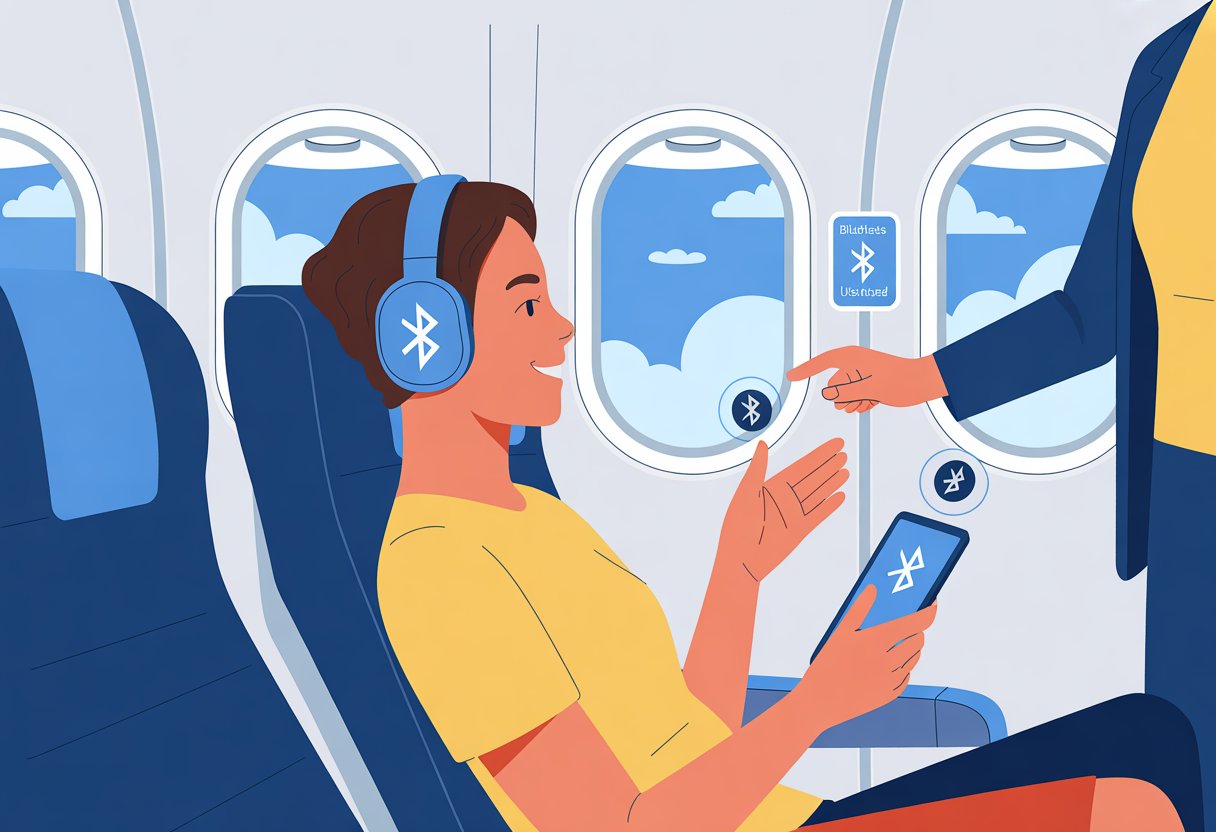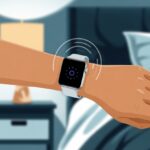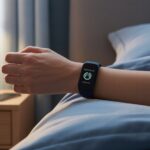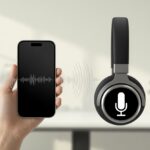Let’s be real—everyone wants to look chill and comfortable when flying, especially if it means avoiding those scratchy wired headphones airlines toss your way. So, can we finally use our trusty Bluetooth headphones on a plane, or are we forever doomed to untangle cords at 30,000 feet? Turns out, yes, most flights let us use Bluetooth headphones, but connecting them to the in-flight entertainment system takes a little extra effort.

It’s rarely as simple as flipping a switch and zoning out to our favorite playlist. Depending on the airline, the plane, and our own gear, there are sometimes extra steps.
Some planes need a Bluetooth adapter because most entertainment screens only have a headphone jack.
If we bring the right gadget, we can finally enjoy movies, music, and podcasts in peace—no wires, no awkward headphone hair, and no fussing with cords. Flying in style is totally possible, with both our comfort and our playlists sorted.
Understanding Bluetooth Headphones on Airplanes
When we toss Bluetooth headphones or AirPods into our carry-on, we’re hoping for easy listening. But getting wireless headphones to work with airplane systems can be a hassle.
Still, there are clever ways to make our travels more enjoyable and wire-free.
How Wireless Headphones Work
Wireless headphones—whether earbuds, earphones, or big cushy cans like the Bose QC35—use Bluetooth. They connect to our stuff without cords.
Bluetooth sends tiny radio waves over short distances, usually up to 30 feet, so we don’t get tangled up or accidentally yank our neighbor’s snack off the tray.
Pairing is pretty easy on our phones and tablets. We turn on Bluetooth, scan, and tap our device.
AirPods and similar buds even play a little chime when they connect. Of course, none of this stops us from looking a bit silly when we try to chat with the flight attendant while wearing headphones.
Bluetooth Connectivity Challenges in Flight
Here’s the snag: most airplane entertainment screens aren’t built for wireless headphones. They want us to use those old-school headphone jacks.
Trying to pair Bluetooth headphones directly is like expecting the in-flight meal to taste homemade—wishful thinking.
Most flights allow Bluetooth after we switch to airplane mode, but without a special adapter, the seatback screen and our AirPods just won’t connect.
We need a Bluetooth transmitter that plugs into the plane’s headphone jack. The transmitter pairs with our headphones, so we can finally watch movies without fighting cords.
You can find more about this in this guide on using Bluetooth headphones on a plane.
Not every transmitter is perfect. Some die quickly, and some are chunkier than we’d like.
And yeah, the “pairing failed” message still pops up now and then—keeps us humble, I guess.
Popular Bluetooth Headphones for Travel
On flights, we spot lots of Bose QC35, Sony WH-1000XM4, and, of course, AirPods. People love these because they’re comfy for long hauls and block out engine noise (and that mysterious crying baby who always appears at takeoff).
Earbuds and earphones from Jabra and Beats are everywhere, too. Wireless headphones are handy since they pack small and don’t tie us to our seat.
Here’s a quick comparison table of popular travel picks:
| Model | Type | Battery Life | Noise Canceling |
|---|---|---|---|
| Bose QC35 | Over-ear | ~20 hours | Yes |
| AirPods Pro | In-ear buds | ~5 hours | Yes |
| Sony WH-1000XM4 | Over-ear | ~30 hours | Yes |
| Beats Fit Pro | In-ear buds | ~6 hours | Yes |
The right Bluetooth headphones let us enjoy music and movies without wrestling with cords or those metal airline headsets that somehow always pinch.
Checking Airline Rules and Regulations
We all want to tune in to our favorite songs or podcasts in the sky, but not every airline lets us do whatever we want with Bluetooth. Before we pull out our headphones, it’s smart to know what the rules are and when we’re actually allowed to use them.
Official Airline Bluetooth Policies
Honestly, reading airline policies isn’t anyone’s favorite part of travel. But airlines have rules about Bluetooth and other wireless gadgets.
Many airlines allow Bluetooth headphones, but some enforce stricter rules. Policies can change, so it’s best to check the airline’s website or ask a flight attendant.
The Federal Aviation Administration (FAA) says Bluetooth headphones are fine, but our devices need to be in airplane mode. That means no internet or cell service, but we still get our music.
If we ignore the rules, we’ll probably get that classic “seriously?” look from the crew.
Here’s a quick checklist to avoid trouble:
- Check the airline’s website for their wireless device policy
- Confirm if Bluetooth is allowed for the whole flight or just at cruising altitude
- Bring wired headphones as a backup
When Can You Use Bluetooth Devices Onboard?
If we want to avoid the cabin giving us the stink-eye, we need to know when it’s safe to use Bluetooth gear. Most airlines want us to turn off Bluetooth during takeoff and landing.
After reaching cruising altitude, we can usually connect our headphones and enjoy some tunes—as long as our phone is in airplane mode.
It’s polite (and sometimes required) to wait for the seatbelt sign to go off before turning on Bluetooth. The rules can differ for every airline, so it’s smart to listen for announcements.
Flight attendants have the final say—better to listen than have our music dreams grounded.
Some airlines now allow gate-to-gate Bluetooth use, but others stick to the old ways.
If our device refuses to connect, it’s not a conspiracy—it’s just the airline’s policy. Always check before flying, or we’ll be stuck air-drumming in silence.
Pairing Your Bluetooth Headphones with In-Flight Entertainment
We want to ditch tangled wires and actually use our Bluetooth headphones on a flight. Not all planes are ready for wireless audio, but there are some clever workarounds.
Connecting Directly to Airline Entertainment Systems
Let’s dream for a second: the in-flight entertainment system lets us pair Bluetooth headphones directly. Sounds futuristic, right? But most plane screens still want us to use those little headphone jacks.
A few fancy airlines—and usually just in business or first class—offer Bluetooth pairing on seatback screens.
If you’re on one of these rare flights, pairing is easy. We find the Bluetooth option on the entertainment screen, set our headphones to pairing mode, and choose them from the list.
No adapters, no drama, just movie sound straight to our ears. If you’re flying economy, though, don’t count on it—wired connections are still the standard.
Check if your airline supports direct Bluetooth pairing before you board. We can also look up recent passenger stories or airline FAQs online.
For more on what travelers say, check out these Bluetooth headphone inflight experiences.
Using a Bluetooth Transmitter for Compatibility
If the seatback screen and our Bluetooth headphones aren’t speaking the same language, it’s time for a tech matchmaker—a wireless audio transmitter. This little gadget, sometimes called a Bluetooth transmitter or by brand names like AirFly, plugs into the headphone jack on the armrest.
Here’s how it works:
- Plug the transmitter into the plane’s headphone port.
- Put our Bluetooth headphones in pairing mode.
- Pair the headphones with the transmitter (usually there’s a blinking LED light show).
With this move, any plane seat—old or new—suddenly feels wireless. Transmitters are tiny, easy to pack, and barely add weight to our bag.
It’s a solid fix because it works on almost any in-flight entertainment system, even if the airline is still living in the cable era.
For a more technical step-by-step, check out this Bluetooth transmitter guide and see how products like AirFly help us outsmart old tech.
Setting Up Your Headphones for Airplane Mode
Before we board and look way too cool in our seats, we need to make sure our Bluetooth headphones are ready for the sky. Setting things up takes just a few steps, but skipping them could mean listening to silence or—worse—a crying baby two rows back.
Activating Pairing Mode on Your Headphones
First, we need to get our headphones into pairing mode. Usually, we hold down the power button until a tiny colored light starts blinking.
Different brands have their own quirks. Sometimes, we have to hold the volume up and power buttons together. Others have a separate Bluetooth button (fancy, right?).
If our headphones start flashing blue and red, we’re in business.
If we’re lost, here’s a tip: check the brand’s website or the little instruction booklet that came with them. And keep the headphones close to our device—don’t try to pair from across the aisle.
Configuring Device Bluetooth Settings
Now it’s time to make sure our gadgets play nice in airplane mode. We turn on Airplane Mode first, which blocks calls and texts.
No worries—we can still use Bluetooth for our headphones.
We go to Settings, tap Bluetooth, and turn it on manually. This works on both iPhones and Androids, so nobody’s left out.
Our headphones should pop up in the list of available devices. If not, we can refresh or double-check that they’re still blinking.
Sometimes, a Bluetooth transmitter is needed for the in-flight screen. This little gadget plugs into the headphone jack and pairs with our headphones, saving us from those scratchy airline earbuds.
If everything’s paired, we’re ready to enjoy the movie, the music, or just tune out the world at 30,000 feet.
Comparing Wired vs. Wireless Headphones for Airplane Travel
Picking between wired and Bluetooth headphones on a plane is kind of like choosing between the aisle and the window seat. There’s no perfect answer, but each has real trade-offs.
It all comes down to battery life, comfort, and what the flight crew will actually let us use.
Pros and Cons of Using Wired Headphones
Wired headphones? Yeah, they’re the old-school pick, and honestly, they just work with in-flight entertainment systems. We don’t have to stress about batteries dying in the middle of a movie cliffhanger.
There’s also no last-minute panic about pairing or losing connection when the flight attendant barrels down the aisle. The sound quality tends to be more dependable since signal interference isn’t really a thing here.
We skip those Bluetooth delays and random audio dropouts. But, let’s be real, those wires seem to tangle themselves up for fun.
If our phone or tablet ditched the headphone jack, we’re stuck digging for a dongle—usually buried somewhere in the depths of our bag. And, being physically tethered to our screen? One sudden stretch and boom, headphones yanked out, drama included.
Advantages of Bluetooth Headphones Mid-Flight
Bluetooth headphones? Game changer for moving around without feeling like a tangled marionette. Some models have batteries that last longer than most flights, so we can binge-watch without worrying about the dreaded “low battery” beep.
Newer over-ear types really outlast earbuds, which is something travelers debate a lot—just check out this earbuds vs over-the-ear for long flights thread. Want to nap or lean over your tray? No wire to get in the way.
Noise-canceling Bluetooth headphones are lifesavers for blocking out that constant engine drone. Less airplane noise means less stress, as SoundStageSolo points out.
But here’s the catch: not every airline allows Bluetooth during takeoff or landing. If our battery dies or the seat screens don’t support Bluetooth, we’re out of luck.
Pairing can be a hassle, too. It always seems trickier when there’s a bathroom line and the snack cart finally shows up.
Maximizing Audio Quality and Comfort in the Skies
Flying messes with our ears and can make music sound, well, tinny. We need to care about both sound quality and noise cancellation if we want to keep our sanity at 30,000 feet.
Trust me, our playlist (and our mood) will thank us.
Getting the Best Sound from Wireless Headphones
Up in the air, we just want our headphones to sound good. But if we forgot to charge them? Oops, that’s on us.
Always charge Bluetooth headphones before boarding. Not every seat has a USB port, and nobody wants to ask a stranger for a cable while rocking a llama neck pillow. If you need more tips, check this Bluetooth headphones on a plane guide.
Some in-flight screens only work with wired headphones. We can get around that with a Bluetooth airplane adapter. Pair the adapter, plug it into the seat jack, and suddenly, we’re not stuck with underwater-sounding airline speakers.
Devices like the Voyager Free 60+ UC or AirFly make this super simple. No complicated setup required.
Don’t forget to tweak the equalizer on your phone or tablet. Everyone’s ears are different, and honestly, who ever asked for less bass? A quick adjustment helps when the engines start roaring.
Noise Cancellation for a Peaceful Flight
Airplane cabins are basically the opposite of peaceful. Noise cancellation lets us block out crying babies and chatty neighbors with a quick button press on our Bluetooth headset.
Premium headphones with active noise cancellation use tiny microphones to pick up and cancel out the engine’s droning. Good models, like the Voyager Free 60+ UC, let us enjoy music, podcasts, or just sweet, sweet silence.
On long flights, this can be a lifesaver when even the announcements sound exhausted. If we want a more consistent experience, especially during turbulence or loud cabins, we should look for headphones with hybrid or adaptive noise cancellation.
Always test the noise cancellation before flying. It’s better than fumbling with buttons mid-flight and accidentally switching to Bluetooth somewhere over the ocean.
Troubleshooting Common Issues with Bluetooth Headphones
Honestly, nothing ruins a long flight faster than Bluetooth headphone drama. Connectivity hiccups and battery issues can turn a good trip into a headache.
Dealing with Connectivity Problems
Bluetooth can get moody on planes—so much metal, so many people, and let’s not even talk about the Wi-Fi. If our headphones won’t connect, we should check that both devices are in pairing mode and close together.
Airlines sometimes have restrictions, so it’s smart to check if Bluetooth is allowed on our flight. The classic IT move—turn airplane mode off and on—actually helps more often than you’d think.
If the seat-back screen doesn’t have Bluetooth, we’ll need an adapter or we’re stuck with those crunchy-sounding airline headphones. When headphones suddenly stop working, it’s probably a pairing issue or interference.
Other travelers have run into the same problems with wireless headphones mid-flight. Sometimes, a restart (for both us and our gadgets) is the only way forward.
Quick Fixes Table
| Problem | Solution |
|---|---|
| Won’t Pair | Check pairing mode, restart |
| Audio Dropouts | Stay close to device |
| Not Detected | Use Bluetooth adapters |
Battery Life Hacks While Flying
Long flights? Total battery marathon. Let’s just charge our Bluetooth headphones before we even leave for the airport.
Some planes have USB charging, but don’t count on it—you don’t want to fight for a port mid-flight. If our headphones have a power-saving mode, we should turn it on to stretch battery life.
Lowering the volume and turning off extra features like noise cancellation helps, too. For those extra-long journeys, it’s smart to bring a small power bank.
Always check the charge level before each leg. Nobody wants to watch the in-flight map in silence.
A lot of planes still don’t have USB charging, so charging up beforehand is key, as Bluetooth headphone guides for flying suggest. If there’s ever a time to over-prepare, it’s before a flight—our ears will appreciate it.
Tips for an Enjoyable Wireless Flying Experience
Flying with Bluetooth headphones, earbuds, or earphones is usually smooth if we plan ahead. Battery life, comfort, and easy access matter more than we like to admit.
Storing and Charging Your Headphones
Unpacking headphones only to find a tangled mess or, worse, a dead battery? That’s the worst. We should use the carrying case they came with, or pick up a hard-shell case if we’re prone to accidents (no shame).
Charging Bluetooth headphones or earbuds before we leave is just smart. It saves us from the heartbreak of silence right when the in-flight movie starts.
On longer flights, a portable power bank is a lifesaver. Most headphones charge via USB these days, which is perfect for those seat-back ports—unless we’ve lucked into a seriously old plane.
Forgetting a charging cable is almost as bad as forgetting snacks. Always pack an extra in your carry-on. If we’re worried about running out of battery mid-flight, bringing a wired backup is a solid move too, as travel pros suggest.
Using Earbuds and Earphones Efficiently
Let’s be honest—if we keep our earbuds or earphones buried at the bottom of a bag, we’ll probably miss that moment when the “you may now use electronic devices” announcement pops up. I like to keep mine close at hand.
Bluetooth earbuds are tiny, which is great, but they’re also ridiculously easy to lose. Some folks throw them in a small pouch, or just use a zippered pocket. It’s a simple trick, but it means we won’t end up crawling under seats, searching for runaway earbuds.
You’ll get the best sound if your earbuds fit well. I’d recommend testing out different tips before your trip. That way, you’re not stuck fumbling with them at 35,000 feet.
If the in-flight entertainment system only has a wired connection, don’t stress. We can use adapters like Bluetooth transmitters to connect our wireless earbuds. Honestly, it’s a lifesaver when your seatmate suddenly decides to stretch mid-movie—this practical guide explains how to make it work.
- Why is my fitness tracker not pairing with Apple Health? Troubleshooting for Technologically Cursed Mortals - December 22, 2025
- Why is my fitness tracker not updating firmware? Tech Tantrums and Update Woes Explained - December 21, 2025
- Why is the Sound Quality on My Bluetooth Headphones Poor? It’s Not Just Bad Music Taste! - December 21, 2025






